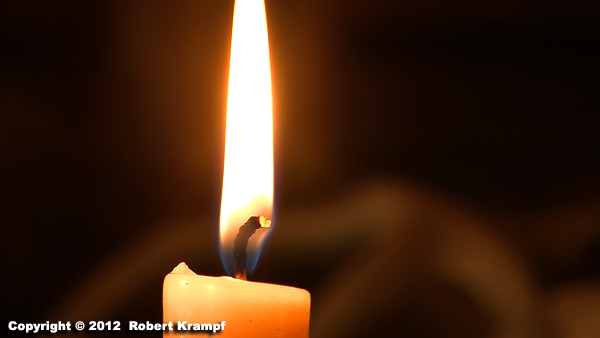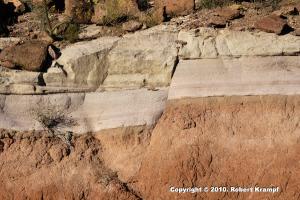
Answer:
The bottom of the flame is getting plenty of oxygen, allowing the fuel vapor to burn completely. That produces a blue flame. If you look very closely at a candle flame, you can sometime see that the entire flame is surrounded by a thin layer of blue flame, because the surface where flame meets the surrounding air also gets plenty of oxygen, allowing complete combustion.
On the inside of the flame, limited oxygen levels result in incomplete combustion, which produces particles of carbon soot. Those particles are heated by the flame, and glow, much like the filament of a light bulb.
You can see the same blue flame on a gas stove, because vents allow the gas to mix with air before it burns. If your burner has a yellow flame instead, the vent is blocked. That can be dangerous, as incomplete combustion can produce carbon monoxide instead of carbon dioxide.

